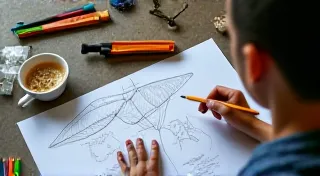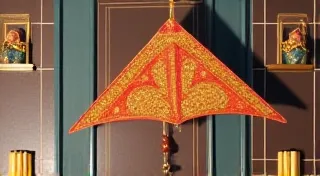Understanding the Physics of Kite Spin
Kite spinning can be one of the most captivating elements of kite flying. Transforming a simple diamond shape into a whirling dervish in the sky isn’t just about aesthetics; it’s a fascinating display of physics in action. This article will explore the principles behind kite spin and how you can manipulate them to create exciting aerial displays with your custom kites.
The Basic Principles: Torque and Angular Momentum
At its core, a kite spin is all about torque and angular momentum. Let's break those down:
- Torque: Torque is a twisting force. In the context of kite flying, it’s the force causing your kite to rotate. It's not just about the wind pushing on the kite; it’s about *where* that wind is pushing.
- Angular Momentum: This is a measure of an object’s resistance to changes in its rotation. The higher the angular momentum, the more difficult it is to stop or alter the spin.
Imagine a spinning top. The wind pushing on the kite is like the force trying to stop the top from spinning, but the top’s angular momentum keeps it rotating. Similarly, for a kite to spin, you need a force (torque) and a way to maintain that rotation (angular momentum).

How Kite Design Influences Spin
The shape and construction of your kite play a critical role in its ability to spin. Here's a look at key design elements:
- Shape: Asymmetrical kite designs are naturally prone to spinning. A simple diamond kite, if perfectly balanced, won’t spin easily. However, subtly shifting the center of pressure—perhaps by slightly altering the sail shape or bridle position—can induce rotation.
- Bridle Point Placement: This is *crucial*. The bridle is the series of lines connecting the kite's frame to the flying line. Moving the bridle point closer to one side of the kite will create an imbalance in the wind's pressure, forcing a spin. Experimentation is key; small adjustments can make a big difference.
- Weight Distribution: Adding small weights to one side of the kite will also create an imbalance and encourage spinning. This is a very direct method, but can be helpful for understanding the principles.
- Sail Material & Stiffness: The flexibility and weight of the sail material influence how the wind interacts with the kite, affecting the spin. A stiffer sail might create a more consistent spin, while a lighter, more flexible sail might result in a more erratic, but potentially more visually interesting rotation.

Controlling the Spin
Once you’re inducing spin, you can control its speed and stability by manipulating a few factors:
- Wind Speed: Higher wind speeds generally increase the spin rate. However, excessively strong winds can make the spin unstable.
- Flying Line Angle: Adjusting the angle of the flying line relative to the kite influences the torque applied. A steeper angle can increase the spin rate.
- Bridle Adjustments (Fine-Tuning): Tiny shifts in the bridle point, even fractions of an inch, can drastically change the spin. This is where careful observation and experimentation pay off.
- Kite Trim: Sometimes a slight trim of the kite's sail - a small adjustment to the sail’s shape - can refine the spin characteristics.

Advanced Techniques: Spinning with Custom Kites
Building custom kites opens up even more possibilities for creating spectacular spinning displays:
- Multi-Wing Designs: Kites with multiple sails or wings are inherently more prone to spinning.
- Complex Shapes: Experiment with unusual and asymmetrical shapes to create unique spin patterns.
- Dynamic Bridle Systems: Consider designs where the bridle point can be actively adjusted during flight, allowing for real-time control of the spin.
Understanding the physics behind kite spin is more than just a technical exercise; it’s a gateway to creative expression. With careful design, experimentation, and a bit of understanding, you can unlock a whole new dimension of kite flying and create truly breathtaking aerial performances with your custom kites.






